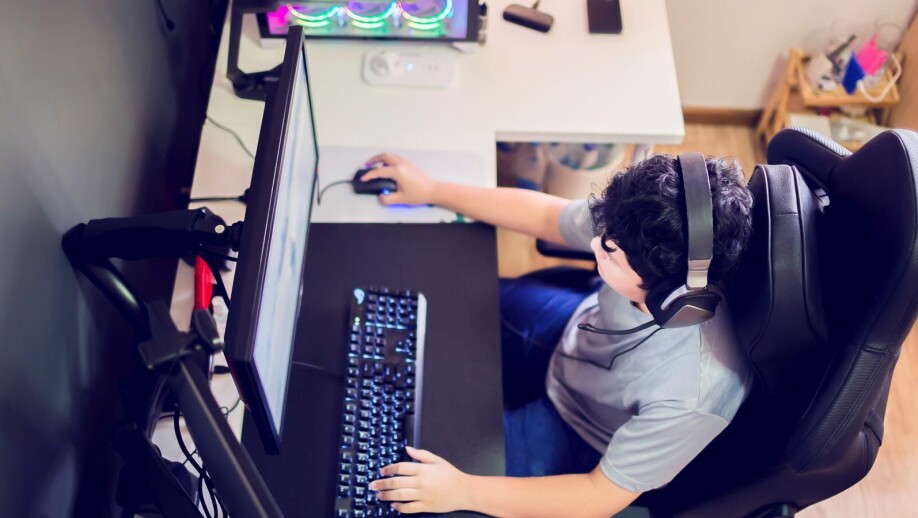THIS ARTICLE/PRESS RELEASE IS PAID FOR AND PRESENTED BY The Norwegian School of Sport Sciences - read more

Increase in physical activity did not result in higher grades
There is no link between physical activity and pupil performance, and only a very tenuous link between physical activity and mental health, according to a new long-term study.
Several studies have shown that physical activity helps boost performance, also at school. A so-called intervention study (see fact box) recently showed that by increasing the amount of physical activity by only two hours per week at school, the pupils achieved better results, particularly in Norwegian and maths — even when this meant fewer hours spent on maths and Norwegian classes.

However: It is actually not that simple. How to measure physical activity and performance at school entails significant problems methodologically, as different types of studies use such different types of measurement, providing varying results – even though combining the data gives an increasingly complete picture.
So: How important is physical activity really for mental health and pupil performance during adolescence?
Long-term study
Ingeborg Barth Vedøy has studied these links over time, and can demonstrate that the whole picture is very complex. At the same time, we must also keep in mind that different study designs may provide different results. Furthermore: Individual differences and starting points for different participants may impact results.
Ingeborg Barth Vedøy set out to identify the actual link between physical activity and mental health – and between physical activity and performance at school. She monitored 600 lower secondary school pupils from 11 schools in East and West Norway over a period of three years, from 2016 to 2018. The pupils were aged 12-16.
- She measured their level of activity with a so-called accelerometer, a small electronic meter that objectively records the amount of time you are active or inactive, and the intensity of the activities. The participants wore the meter all day long while they were awake, for one week at a time. This method has been utilised in several other studies, for example in UngKan3.
- The participants’ mental health was measured by the participants reporting on mental health problems and well-being. These reports were compiled using fully tested questionnaires. Well-being is a term used to indicate a person’s positive feelings and life satisfaction, function and self-realisation, and also how a person functions socially, both in society and in relation to others. She also measured so-called 'domain-specific self-confidence' which, put simply, implies the pupils’ self-esteem both at school and outside of school.
- The pupils’ performance at school was measured via the average grades from each autumn term over the three years.
Gaming and sitting still can be OK
Even though the results do not dismantle established beliefs, the study does provide a much more nuanced picture of the link between physical activity and mental health:
- There is no link between physical activity or sitting still on the one hand and mental health problems on the other hand in what is, in general, a healthy group of adolescents. This implies that better explanations for mental health problems can be found in other factors than physical activity.
- There is a certain link between physical activity, self-confidence and well-being, and this is most evident among girls.
- With boys, a positive link was identified between sitting still and well-being, typically with boys who were 'stuck in front of a gaming PC'. In this case, however, we do not know what they are doing while they are sitting there. The social factor in their online networks may perhaps provide an explanation for these findings.
“This is the most surprising thing we found. We already knew that time spent passively watching TV has a negative impact on our mental health. However, gaming can be both more active and social, even though you are sitting down. This link requires more detailed study!”
- There is no link between physical activity and school performance.
– Conclusion?
“It is difficult to be precise here, but we can at least establish that there is no clear link between the amount or intensity of physical activity and mental health problems, as indicated by several former studies. Neither is the opposite the case – i.e., there is no link between spending lots of time sitting still and mental health problems,” she confirms, going on to add: “This is at least the conclusion for groups of healthy pupils.”
The pupils who took part in her study all started out with good mental health. For adolescents with a less healthy starting point, she believes that physical activity could have had a different, more positive effect.

Different methods for measurement
— But the apparent lack of link between physical activity and pupil performance pretty much contradicts former conclusions, facts that we already 'know', doesn’t it?
“We have utilised more objective forms of measurement compared to many other studies, and monitored the pupils over a longer period of time than normal. One major strength with our study has been the use of an accelerometer, providing objective measurements instead of basing our results on what the participants themselves have told us about how active they have been,” she explains.
At the same time, however, the accelerometer is not able to record all kinds of activities. If, for example, a boy has performed some technically difficult exercises on a skateboard, this will not be captured to any extent by the accelerometer, but the boy will reply yes when questioned if he has been active. And he would be right in doing so, even if the activity did not make his pulse rise.
– So, subjective reporting can provide a more accurate picture...?
“The accelerometer gives us much more precise information about the amount, intensity and frequency of physical activity and, if this has a decisive impact on different aspects of mental health or school performance, then it is also the most correct information we can find.”
May nonetheless be beneficial
Although Vedøy’s study has not shown any gains from physical activity in the form of improved performance at school, she does not exclude there being any such gains. It has been shown, for example, that physical activity at school can boost concentration and learning immediately afterwards, but this has not been investigated as part of this study.
— Are there other factors that may be significant?
“Yes, there are most likely many factors that play a role here; the overall learning situation, everyday issues such as how good the teacher is, the relationships between the pupils, the socioeconomic status of each pupil, whether one of them has just broken up with their girlfriend/boyfriend or had other difficult experiences – to mention just a few. There are a lot of factors to study, perhaps an indication of how difficult this field is to measure.”
See more content from The Norwegian School of Sport Sciences:
-
Football expert wants to change how people watch football at home
-
Kristine suffered permanent brain damage at 22: "Life can still be good even if you don’t fully recover"
-
Para sports: "The sports community was my absolute saving grace"
-
Cancer survivor Monica trained for five months: The results are remarkable
-
What you should know about the syndrome affecting many young athletes
-
New findings on how athletes make the best decisions





































